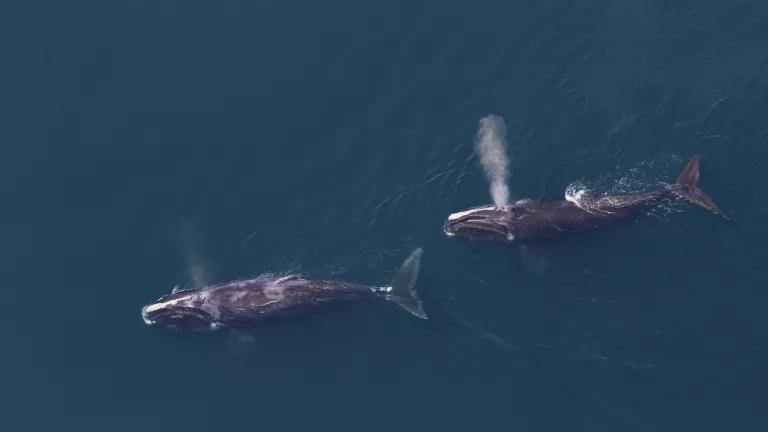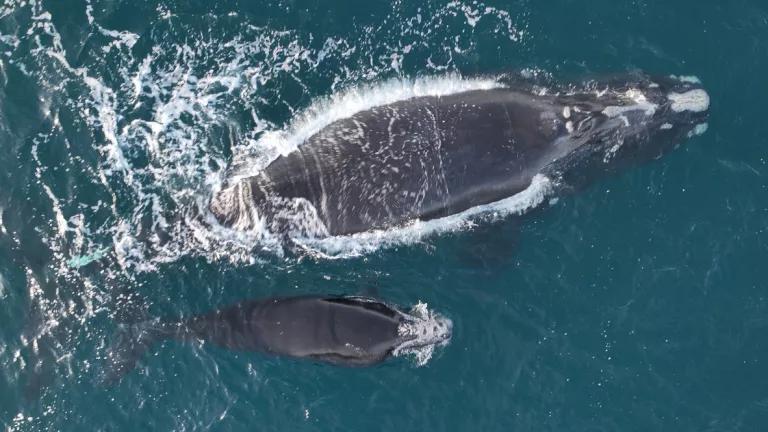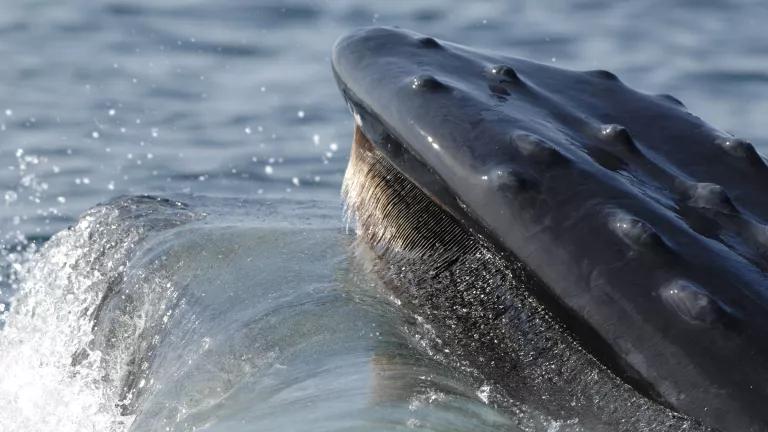NOAA Fails to Protect Right Whales from Entanglement
New regulations from NOAA fall far short of what is needed to save the species.

The measures in the Final Rule will not reduce the number of entanglements to levels necessary to save the species - NOAA must do more
NOAA has issued its final rulemaking of Phase I modifications to the Atlantic Large Whale Take Reduction Plan to reduce the number of North Atlantic right whales killed or injured from entanglement in the northeast commercial lobster and Jonah crab trap/pot fisheries. But the new regulations fall far short of what is needed to save the species.
North Atlantic right whales are one of the most endangered whales in the world. There are less than 360 whales left and fewer than 90 are breeding females, the lifeblood of the species. North Atlantic right whales are declining at a horrifying rate due to a deadly combination of entanglements in fishing gear and vessel strikes. We are running out of time to reverse this trajectory.
NOAA embarked on its rulemaking process with the charge of reducing the risk of entanglement of North Atlantic right whales in commercial fishing gear to sustainable levels, as it is mandated by law under the Marine Mammal Protection Act. But four years on there is little to see for this effort.
The final rule does not adequately reduce risk.
For North Atlantic right whales to stand any chance of recovery, risk of death or fatal injury from entanglement needs to be reduced by 80 percent based on the current population size. Yet only a 69 percent risk reduction target is required by the final rule.
The agency itself admits failure in this regard. Even if the new management measures were 100 percent effective, the estimated number of entanglements will result in the death or serious injury of more than three right whales annually. That is four and a half times the number that science shows the species can withstand from all human activities, not just entanglement.
The management measures need to be strengthened.
Modifications to the Take Reduction Plan include a reduction in the number of fishing lines, two new seasonal fishery closures, and extending the Massachusetts Restricted Area seasonal closure. These measures will go some way to reducing the number of entanglements and should be implemented immediately.
But the closures will not reduce risk to a level required to protect the species. For example, the new seasonal fishery closure off southern New England will be in place from February to April despite strong scientific evidence that this area represents an important foraging habitat for right whales year-round.
A significant level of risk reduction is also attributed to a requirement to use weaker ropes on the assumption that right whales will be able to break free and that entanglements, when they do occur, will be less severe. But the effectiveness of weaker ropes in reducing risk is entirely theoretical and has not been tested in the field. And calves and juveniles would still not be strong enough to break free.
NOAA will also introduce area-specific fishing gear markings and allow ropeless fishing gear in restricted areas. While these are both positive steps, they do nothing to immediately reduce risk.
NOAA’s phased approach to the rulemaking is illegal.
The final rulemaking represents Phase One of a four-phase strategy that will be implemented by the agency to reduce entanglements to required levels over a period of ten years. This is illegal as NOAA is required by law to immediately reduce the number of entanglements to sustainable levels. Moreover, the agency’s strategy remains almost entirely undefined, meaning that there are no assurances that the level of risk reduction necessary to save the species will ever be achieved.
This is even more concerning as NOAA appears to be following the same flawed process as it embarks on Phase Two of its effort. In doing so, the agency is refusing to acknowledge concerns from the environmental community, as well as the thousands of members of the general public, that have been submitted to the agency during the last four years.

Removing vertical lines from the water is the only way to meaningfully protect right whale mother "Egno" and her calf from entanglement
Enough delay. NOAA should immediately implement the measures in the Final Rule that will meaningfully reduce risk of entanglements—line reductions and fishery closures. It must then work swiftly to strengthen its management measures to reduce the entanglement risk to legal levels.
Coexistence of right whales and fisheries is possible, but not through the half-measures included in the final rule. Ropeless fishing gear offers a way virtually eliminate entanglement risk while keeping fishermen on the water. The US has an opportunity to demonstrate global leadership in advancing this technological innovation, potentially generating US-based jobs and helping vitalize coastal communities.
NRDC hopes that the Biden-Harris Administration chooses strong leadership, science, and innovation to be its legacy for North Atlantic right whales, rather than one forever marked by the extinction of one of the nation’s most iconic species.





